Nicola Bastianello
A Communication-Efficient Decentralized Actor-Critic Algorithm
Oct 22, 2025Abstract:In this paper, we study the problem of reinforcement learning in multi-agent systems where communication among agents is limited. We develop a decentralized actor-critic learning framework in which each agent performs several local updates of its policy and value function, where the latter is approximated by a multi-layer neural network, before exchanging information with its neighbors. This local training strategy substantially reduces the communication burden while maintaining coordination across the network. We establish finite-time convergence analysis for the algorithm under Markov-sampling. Specifically, to attain the $\varepsilon$-accurate stationary point, the sample complexity is of order $\mathcal{O}(\varepsilon^{-3})$ and the communication complexity is of order $\mathcal{O}(\varepsilon^{-1}\tau^{-1})$, where tau denotes the number of local training steps. We also show how the final error bound depends on the neural network's approximation quality. Numerical experiments in a cooperative control setting illustrate and validate the theoretical findings.
Formal Verification of Local Robustness of a Classification Algorithm for a Spatial Use Case
Sep 04, 2025Abstract:Failures in satellite components are costly and challenging to address, often requiring significant human and material resources. Embedding a hybrid AI-based system for fault detection directly in the satellite can greatly reduce this burden by allowing earlier detection. However, such systems must operate with extremely high reliability. To ensure this level of dependability, we employ the formal verification tool Marabou to verify the local robustness of the neural network models used in the AI-based algorithm. This tool allows us to quantify how much a model's input can be perturbed before its output behavior becomes unstable, thereby improving trustworthiness with respect to its performance under uncertainty.
Personalized and Resilient Distributed Learning Through Opinion Dynamics
May 20, 2025Abstract:In this paper, we address two practical challenges of distributed learning in multi-agent network systems, namely personalization and resilience. Personalization is the need of heterogeneous agents to learn local models tailored to their own data and tasks, while still generalizing well; on the other hand, the learning process must be resilient to cyberattacks or anomalous training data to avoid disruption. Motivated by a conceptual affinity between these two requirements, we devise a distributed learning algorithm that combines distributed gradient descent and the Friedkin-Johnsen model of opinion dynamics to fulfill both of them. We quantify its convergence speed and the neighborhood that contains the final learned models, which can be easily controlled by tuning the algorithm parameters to enforce a more personalized/resilient behavior. We numerically showcase the effectiveness of our algorithm on synthetic and real-world distributed learning tasks, where it achieves high global accuracy both for personalized models and with malicious agents compared to standard strategies.
Modular Distributed Nonconvex Learning with Error Feedback
Mar 18, 2025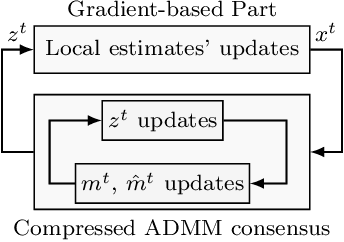
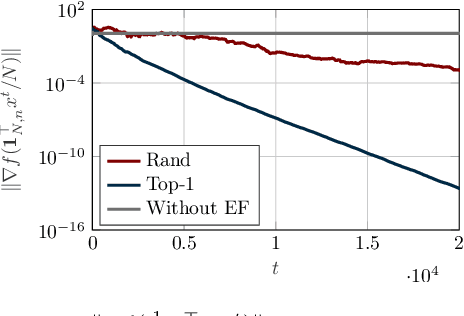
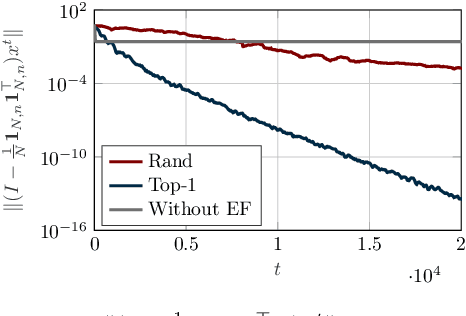
Abstract:In this paper, we design a novel distributed learning algorithm using stochastic compressed communications. In detail, we pursue a modular approach, merging ADMM and a gradient-based approach, benefiting from the robustness of the former and the computational efficiency of the latter. Additionally, we integrate a stochastic integral action (error feedback) enabling almost sure rejection of the compression error. We analyze the resulting method in nonconvex scenarios and guarantee almost sure asymptotic convergence to the set of stationary points of the problem. This result is obtained using system-theoretic tools based on stochastic timescale separation. We corroborate our findings with numerical simulations in nonconvex classification.
Optimization and Learning in Open Multi-Agent Systems
Jan 28, 2025



Abstract:Modern artificial intelligence relies on networks of agents that collect data, process information, and exchange it with neighbors to collaboratively solve optimization and learning problems. This article introduces a novel distributed algorithm to address a broad class of these problems in "open networks", where the number of participating agents may vary due to several factors, such as autonomous decisions, heterogeneous resource availability, or DoS attacks. Extending the current literature, the convergence analysis of the proposed algorithm is based on the newly developed "Theory of Open Operators", which characterizes an operator as open when the set of components to be updated changes over time, yielding to time-varying operators acting on sequences of points of different dimensions and compositions. The mathematical tools and convergence results developed here provide a general framework for evaluating distributed algorithms in open networks, allowing to characterize their performance in terms of the punctual distance from the optimal solution, in contrast with regret-based metrics that assess cumulative performance over a finite-time horizon. As illustrative examples, the proposed algorithm is used to solve dynamic consensus or tracking problems on different metrics of interest, such as average, median, and min/max value, as well as classification problems with logistic loss functions.
Hierarchical Federated ADMM
Sep 27, 2024



Abstract:In this paper, we depart from the widely-used gradient descent-based hierarchical federated learning (FL) algorithms to develop a novel hierarchical FL framework based on the alternating direction method of multipliers (ADMM). Within this framework, we propose two novel FL algorithms, which both use ADMM in the top layer: one that employs ADMM in the lower layer and another that uses the conventional gradient descent-based approach. The proposed framework enhances privacy, and experiments demonstrate the superiority of the proposed algorithms compared to the conventional algorithms in terms of learning convergence and accuracy. Additionally, gradient descent on the lower layer performs well even if the number of local steps is very limited, while ADMM on both layers lead to better performance otherwise.
Learning and Verifying Maximal Taylor-Neural Lyapunov functions
Aug 30, 2024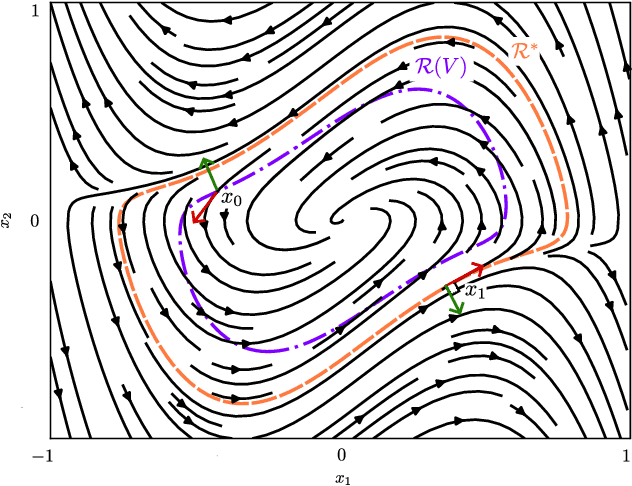
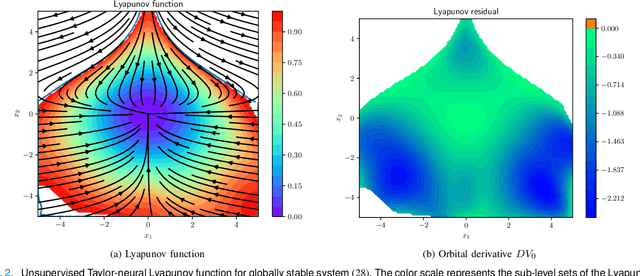
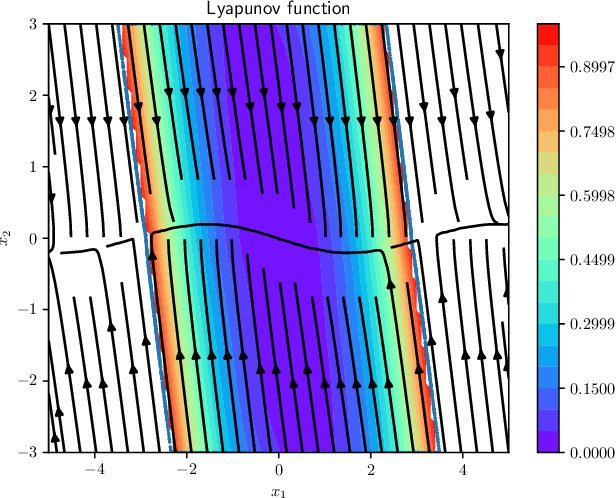
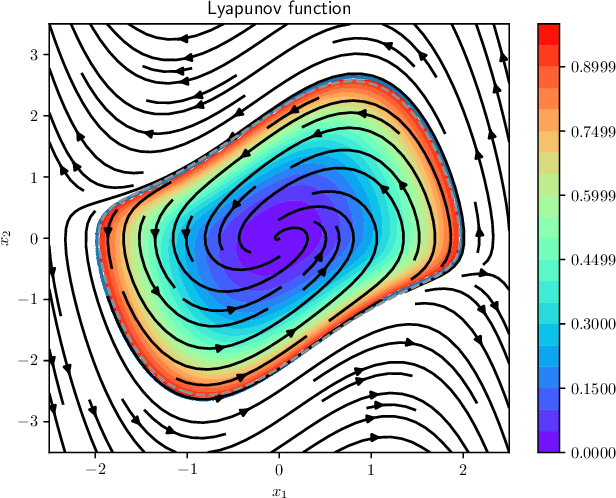
Abstract:We introduce a novel neural network architecture, termed Taylor-neural Lyapunov functions, designed to approximate Lyapunov functions with formal certification. This architecture innovatively encodes local approximations and extends them globally by leveraging neural networks to approximate the residuals. Our method recasts the problem of estimating the largest region of attraction - specifically for maximal Lyapunov functions - into a learning problem, ensuring convergence around the origin through robust control theory. Physics-informed machine learning techniques further refine the estimation of the largest region of attraction. Remarkably, this method is versatile, operating effectively even without simulated data points. We validate the efficacy of our approach by providing numerical certificates of convergence across multiple examples. Our proposed methodology not only competes closely with state-of-the-art approaches, such as sum-of-squares and LyZNet, but also achieves comparable results even in the absence of simulated data. This work represents a significant advancement in control theory, with broad potential applications in the design of stable control systems and beyond.
A survey on secure decentralized optimization and learning
Aug 16, 2024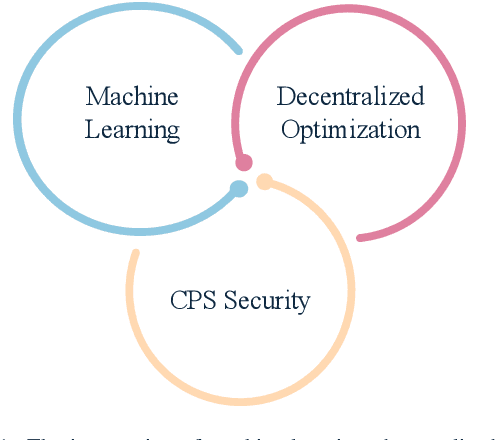

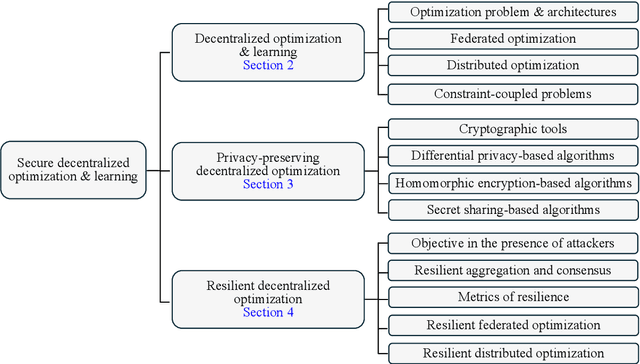

Abstract:Decentralized optimization has become a standard paradigm for solving large-scale decision-making problems and training large machine learning models without centralizing data. However, this paradigm introduces new privacy and security risks, with malicious agents potentially able to infer private data or impair the model accuracy. Over the past decade, significant advancements have been made in developing secure decentralized optimization and learning frameworks and algorithms. This survey provides a comprehensive tutorial on these advancements. We begin with the fundamentals of decentralized optimization and learning, highlighting centralized aggregation and distributed consensus as key modules exposed to security risks in federated and distributed optimization, respectively. Next, we focus on privacy-preserving algorithms, detailing three cryptographic tools and their integration into decentralized optimization and learning systems. Additionally, we examine resilient algorithms, exploring the design and analysis of resilient aggregation and consensus protocols that support these systems. We conclude the survey by discussing current trends and potential future directions.
Energy Reduction in Cell-Free Massive MIMO through Fine-Grained Resource Management
May 11, 2024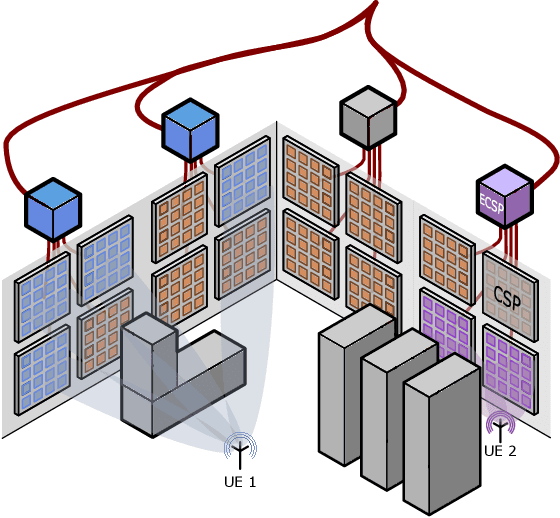
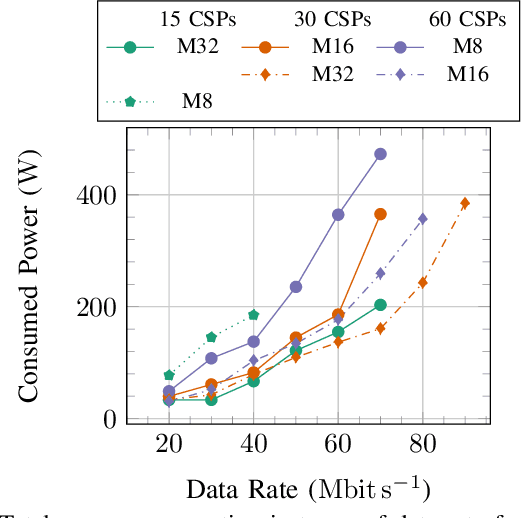
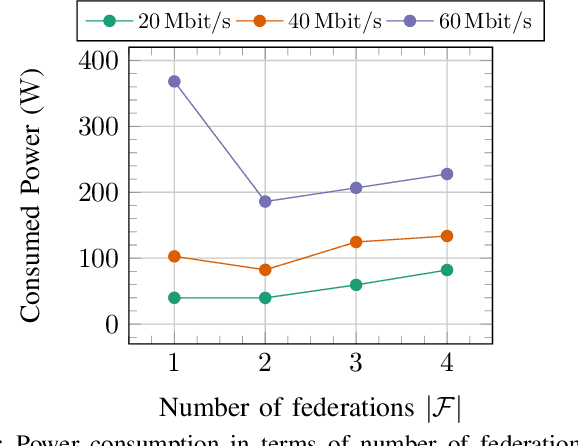
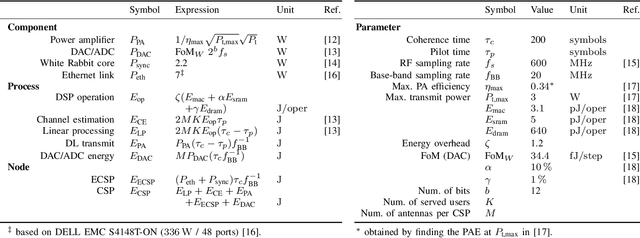
Abstract:The physical layer foundations of cell-free massive MIMO (CF-mMIMO) have been well-established. As a next step, researchers are investigating practical and energy-efficient network implementations. This paper focuses on multiple sets of access points (APs) where user equipments (UEs) are served in each set, termed a federation, without inter-federation interference. The combination of federations and CF-mMIMO shows promise for highly-loaded scenarios. Our aim is to minimize the total energy consumption while adhering to UE downlink data rate constraints. The energy expenditure of the full system is modelled using a detailed hardware model of the APs. We jointly design the AP-UE association variables, determine active APs, and assign APs and UEs to federations. To solve this highly combinatorial problem, we develop a novel alternating optimization algorithm. Simulation results for an indoor factory demonstrate the advantages of considering multiple federations, particularly when facing large data rate requirements. Furthermore, we show that adopting a more distributed CF-mMIMO architecture is necessary to meet the data rate requirements. Conversely, if feasible, using a less distributed system with more antennas at each AP is more advantageous from an energy savings perspective.
Enhancing Privacy in Federated Learning through Local Training
Mar 26, 2024Abstract:In this paper we propose the federated private local training algorithm (Fed-PLT) for federated learning, to overcome the challenges of (i) expensive communications and (ii) privacy preservation. We address (i) by allowing for both partial participation and local training, which significantly reduce the number of communication rounds between the central coordinator and computing agents. The algorithm matches the state of the art in the sense that the use of local training demonstrably does not impact accuracy. Additionally, agents have the flexibility to choose from various local training solvers, such as (stochastic) gradient descent and accelerated gradient descent. Further, we investigate how employing local training can enhance privacy, addressing point (ii). In particular, we derive differential privacy bounds and highlight their dependence on the number of local training epochs. We assess the effectiveness of the proposed algorithm by comparing it to alternative techniques, considering both theoretical analysis and numerical results from a classification task.
 Add to Chrome
Add to Chrome Add to Firefox
Add to Firefox Add to Edge
Add to Edge